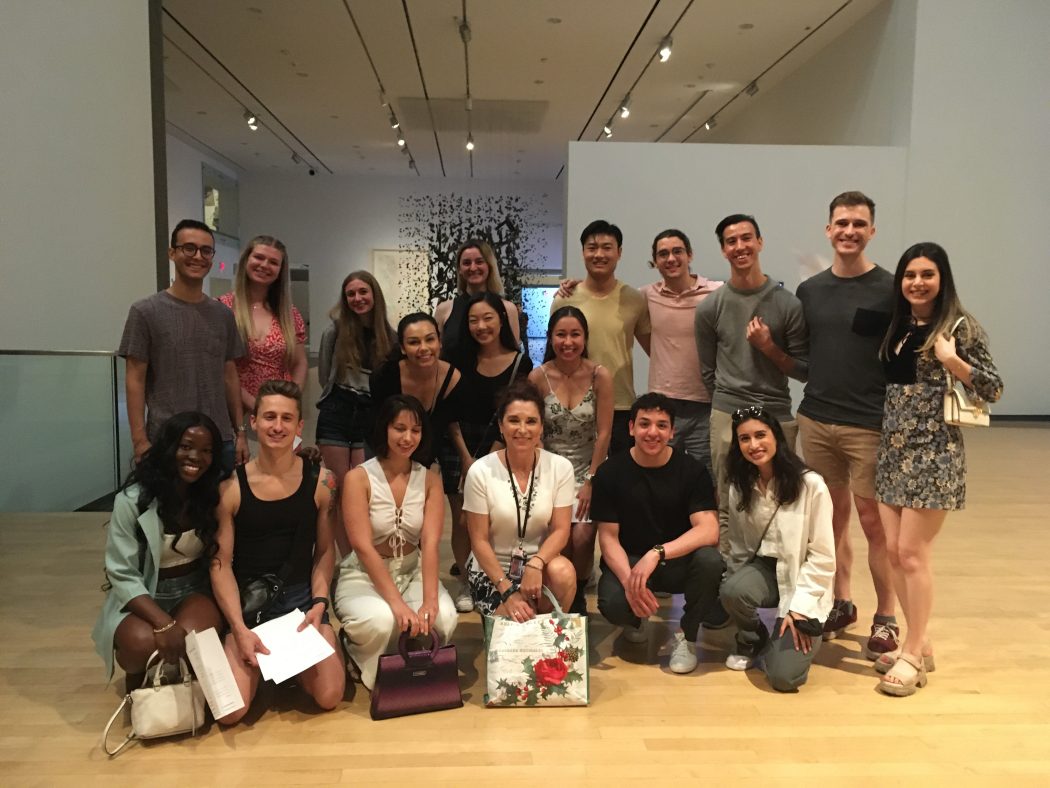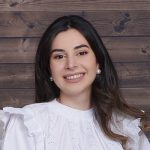Is there anything more American than disposable fashion? This is not a reference to fast-fashion nor a call to action for sustainability, but recognition for a type of clothing popular in the 60s — let’s say a paper party dress — meant to be worn and simply thrown away. Imagine a paper trench coat patterned in psychedelic yellows and poppy oranges meant for mimosas at brunch. When you’ve had a few too many bubbly drinks and spilled all over your newest favorite outerwear, you can simply toss the thin-napkin cloth you’ve fashioned into a jacket in the nearest garbage can. But an even greater question than why disposable fashion was trendy in the 60s, is what twenty medical students are learning when they’ve been told to stare at this paper-fashion exhibit at the Phoenix Art Museum on a random Sunday afternoon.
Pre-pandemic, wrangling a horde of medical students to the museum, reminiscent of the school field trips, was actually quite commonplace at UACOMP. Dr. Cynthia Standley, creator of the Art in Medicine program at our school, had built a strong relationship with the museum. Each visit was a pointed learning activity and chance to look deeply into one chosen exhibit at a time. This time, my classmates and I were told to peruse the paper-fashion exhibit for 30 minutes, more time than I’ve perhaps ever spent on any art exhibit, and to write down words that come to mind from A-Z. The challenge was made more interesting in that we’d have a contest for the person with the most unique words at the end. As medical students who love a bit of friendly competition, we were no doubt taking this contest very seriously.
An example of this competition was aptly demonstrated once we got to the letter E. Many students picked “eclectic” and our winner chose “Eisenhower” which required an immediate follow-up explanation as the rest of the class was convinced he was choosing random words to win. Finding a word for Z would yield double points, but myself and another put Zesty, and our points were canceled. At the end, we crowned Frank Cossio, MS1, as our winner and had to figure out how the activity helped us cultivate a skill in medicine.
Whether we are aware of it or not, we expand our vocabulary tremendously in medical training. In anatomy alone, we have to not only describe the names of structures, but their exact location in 3-D space. When visuals are unavailable, precision of language is crucial. Even the longest word in most English dictionaries, Pneumonoultramicroscopicsilicovolcanoconiosis, is medical vernacular. When patients confide their emotions to us, we learn to echo them precisely, not with synonyms. Though the time spent contemplating whether I would bother wearing a paper bikini — something seemingly incompatible for its purpose to withstand water — was an interesting exercise in cognitive gymnastics, finding the words to describe my observations was an exercise I realize I do almost every day in medical training and certainly with every patient encounter.
While hearing the words my classmates chose for the exercise, seeing the exhibit from their perspective, and enjoying their haikus, I found myself surprised at the linguistic prowess in the room. But after some reflection, I realized it also made complete sense. Physicians should be good orators as they educate patients, good writers whether for a SOAP or a grant to push the frontiers of medicine, and above all, good listeners to learn and expand their own word bank and knowledge base. The Art in Medicine program is simultaneously an allusion to the art OF medicine. And when we hone our artistry, it takes practice; we become practitioners of art and medicine.
Natalie Nabaty is a medical student from the class of 2025 at UACOMP with so many passions she struggles to juggle them all. Between playing guitar, dancing traditional Assyrian line dances, learning about global health, and serving the community, writing is a skill she is happy to refine while in medical school. She graduated from ASU with a Bachelors in Biology and a minor in Psychology. Natalie also spent time doing research in molecular oncology with the Mayo Clinic and Alzheimer’s Disease with Banner Sun Health Research Institute. When she’s not busy with her hobbies, work, and school, she enjoys spending time with her family and friends, exploring the world, and contemplating her existence.


